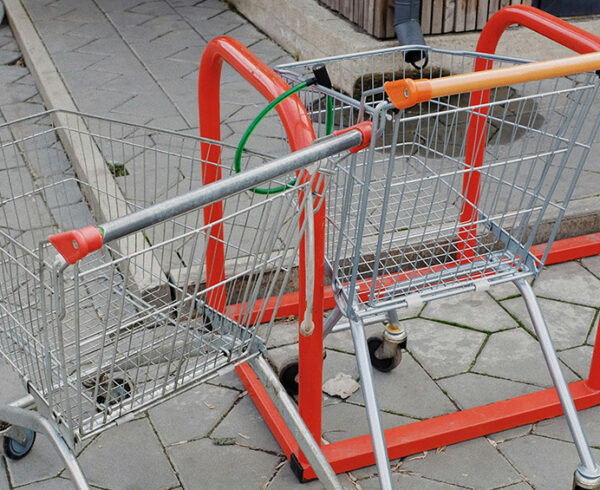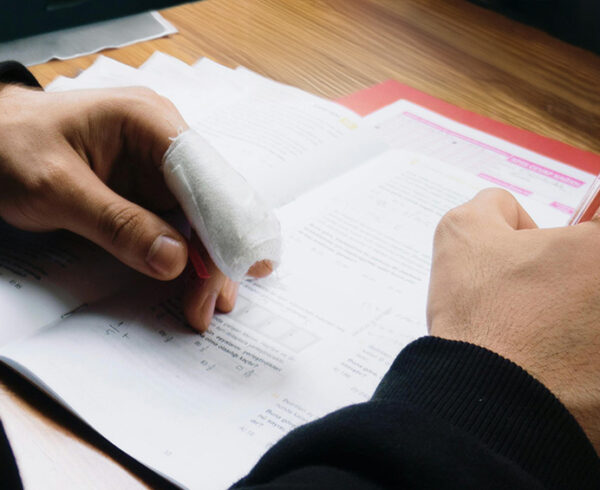Being injured at work can be both distressing and disruptive—especially if it affects your ability to earn a living or carry out daily tasks. If your employer’s negligence played a part—whether due to unsafe conditions, poor training, or faulty equipment—you may be entitled to claim compensation.
How to Make a Work Accident Compensation Claim
If you’ve been injured at work, there are a few key steps to take that can strengthen your claim:
-
Seek medical attention straight away – Not only is this important for your health, but it also creates a clear record of your injuries.
-
Report the incident to your employer – Ask for it to be officially logged in the company’s accident book.
-
Gather evidence – Take photos of the accident scene, keep copies of medical reports, and, if possible, get statements from any witnesses.
It’s also a good idea to speak to an experienced personal injury solicitor, like CEL Solicitors. We’ll guide you through the legal process, handle communication with insurers, and work hard to make sure you receive the compensation you deserve for lost income, medical costs, and any lasting effects on your health.
We work on a no-win, no-fee basis, which means you won’t pay any legal fees upfront. Acting quickly and following these steps gives you the best chance of a successful outcome.
Examples of Workplace Accidents
Accidents can happen in any workplace—whether in an office, warehouse, or on a construction site. While some injuries are minor, others can be life-changing.
According to the Health and Safety Executive (HSE), during 2023/24 there were an estimated 604,000 self-reported non-fatal workplace injuries in Great Britain. On top of that, 875,000 workers reported work-related stress, depression, or anxiety, contributing to the loss of around 17.1 million working days.
Employers have a legal duty of care under the Health and Safety at Work etc. Act 1974. They must take reasonable steps to protect employees from harm. Sadly, that duty isn’t always met.
Common workplace accidents include:
-
Slips, trips, and falls – Wet floors, cluttered walkways, or uneven surfaces can cause broken bones, sprains, or head injuries.
-
Manual handling injuries – Lifting or moving heavy items without proper training can lead to back problems and muscle strains.
-
Falls from height – Workers on ladders, scaffolding, or platforms may suffer serious injuries if they fall.
-
Machinery accidents – Faulty or misused equipment can cause lacerations, crushing injuries, or even amputations.
-
Exposure to harmful substances – Chemicals or hazardous materials can lead to burns, breathing problems, or long-term health conditions.
-
Vehicle-related accidents – Forklifts, delivery vans, and other workplace vehicles can pose serious risks.
-
Falling objects – Items dropped from height can cause concussions or serious trauma.
-
Repetitive strain injuries (RSI) – Office workers or those in manual jobs may suffer long-term damage from repetitive tasks or poor posture.
-
Electrocution accidents – Faulty wiring or exposed cables can lead to electric shocks or burns.
-
Workplace violence – Sadly, some employees face harm from physical assaults or threatening behaviour at work.
If your injury happened because your employer didn’t do enough to keep you safe, you may be able to claim compensation.
Estimating the Value of Accident at Work Compensation
Compensation is designed to help you recover from your injury, not just physically, but financially and emotionally too. While every case is different, a few key factors are considered when working out how much you may be entitled to:
Factors That Affect Compensation
-
Severity of the injury – The more serious the injury, the higher the likely payout.
-
Long-term impact – If your injury has lasting effects or causes permanent disability, this will be reflected in your compensation.
-
Pain and suffering – Physical and emotional trauma are also taken into account.
-
Loss of earnings – If you’ve missed work or are unable to return to your job, this will factor into your claim.
-
Specialist treatment and care – Ongoing treatment, rehabilitation, or personal care needs will be considered.
-
Liability and employer negligence – If your employer is clearly at fault, this can increase the amount awarded.
One of the tools used to estimate compensation is the Judicial College Guidelines (JCG). These are not fixed rules, but they give a useful guide for valuing different types of injuries.
Common Injuries and Estimated Compensation Amounts
Here are some typical injury types and their estimated payout ranges, based on the JCG:
-
Minor soft tissue injuries (e.g. sprains or strains): £1,000 – £5,000
-
Moderate back injuries: £5,000 – £15,000
-
Serious arm or leg injuries: £20,000 – £100,000+
-
Head or brain injuries: £15,000 – £300,000+ depending on severity
-
Loss of limb: £70,000 – £200,000+
These figures are general estimates. Your actual compensation will depend on your individual circumstances, including how the injury has affected your life and future.
High-Profile Workplace Accident Claims
While most cases are straightforward and on a smaller scale, some larger incidents have highlighted the devastating effects of employer negligence.
The Rana Plaza Collapse (Bangladesh, 2013)
The collapse of the Rana Plaza garment factory in Bangladesh killed over 1,100 people and injured thousands more. Workers had complained about cracks in the building, but the employer forced them to continue working. The aftermath of this horrific incident sparked widespread outrage over poor working conditions and worker safety in the garment industry.
The Rana Plaza compensation fund, set up to provide financial relief to the victims and their families, reached its target in 2015, with over $30 million allocated to compensate those affected by the collapse. The compensation was distributed among the injured and the families of those who tragically lost their lives in the disaster.
The BP Deepwater Horizon Explosion (USA, 2010)
The 2010 Deepwater Horizon oil rig explosion, one of the most devastating workplace accidents in history, resulted in 11 workers’ deaths and severe environmental damage. The families of the victims received compensation from BP, and the incident led to lawsuits over unsafe working conditions and the company’s negligence. The company’s liability for the disaster grew to over $65 billion, which included compensation for victims and efforts to clean up the environmental disaster. This case highlights the importance of workplace safety and the heavy financial toll of negligence.
Asda Bakery Worker (UK, 2009)
A bakery worker who was pinned against a safety rail by a stack of bread weighing 80 kilograms has been awarded nearly £4,000 in compensation for his injuries. The member of the Bakers, Food and Allied Workers Union (BFAWU) suffered soft tissue damage to his lower back and severe bruising to his thigh following the incident at a bakery in Stockton in December 2009.
The accident occurred while he was working at the depot, preparing trolleys of bread for delivery. As he had his back turned to the ramp, a colleague sent a trolley stacked with bread down towards him at speed. He heard the noise and turned, but was unable to avoid being struck and pinned against a safety rail. It was later revealed that there was no system in place to prevent trolleys from coming down the ramp if the worker was not in a position to receive them.
Take the Next Step Towards Workplace Injury Compensation
If you’ve been injured at work and think your employer may have been at fault, it’s important to seek legal advice as soon as you can.
At CEL Solicitors, our team of expert personal injury solicitors are here to guide and support you. Whether you’re dealing with lost income, medical bills, or long-term consequences, we’ll help you secure the compensation you deserve.
We operate on a no-win, no-fee basis—so there’s no upfront cost, and nothing to pay unless we win your case. Call 0330 057 2286 or check if you are eligible now.













